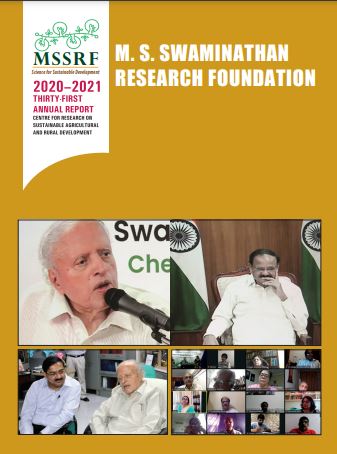Sometimes the simplest of solutions can have the most effective results for nutrition. One such low-cost mechanism was use of pedal pumps for raising vegetable gardens among 400 small and marginal tribal farming communities in Odisha. These pumps were introduced as part of the Alleviating Poverty and Malnutrition (APM) Project in 2011, whose results are now visible.
Seasonal vegetable production grew by 156%, household consumption of vegetables by 109% while reducing the time spent for irrigation by 40%. Moreover, the participation of women increased by 101% as drudgery-reduction attracted more of them into the activity.
This was one among various studies and research outcomes shared during the National Consultation on “New Opportunities for Nutritious Foods and Climate Smart Agriculture” in Delhi on August 21st during which stakeholders from Government, development and multilateral agencies participated.
APM (Alleviating Poverty and Malnutrition in Agri-Biodiversity Hotspots of India) project funded through IDRC-CRDI and DFATD in Canada is implemented jointly by M S Swaminathan Research Foundation (MSSRF) and the University of Alberta. It aims to address issues related to small-holder and family farmers for moving towards food and nutritional security through sustainable agricultural practices. The project focus is on rural communities in three sites in India (Odisha, Tamil Nadu and Kerala) to apply knowledge gained in these three agrobiodiversity hotspots, more broadly across India and other regions. Various efforts such as increasing usage of simple community-centred mechanisms over the three-and-a-half year period contributed towards the objective of reducing poverty and malnutrition.
Delivering the Inaugural Address at the consultation in New Delhi, Dr. Peter Kenmore, FAO Representative in India, spoke about the importance of traditional and local knowledge. “The local wisdom is as rich a source of scientific knowledge as that of researchers. We need to tap this traditional and local knowledge.”
Dr J S Sandhu, Agriculture Commissioner, Government of India, spoke about the waning interest in millets. “In spite of the prediction of deficit monsoon, the area under cultivation of millets is declining, though they require less water”. He spoke about various efforts being taken by Government of India in the area of millets under the Food Security Mission.
The APM project has been addressing the agriculture-nutrition disconnect, to recommend interventions for scaling up and for appropriate public policy. The research outcomes range from increasing farm productivity, enhancing food and nutrition security, enhancing farm livelihood diversification options and use of ICT for increasing development impact, to capacity building of community-based institutions for sustainability.
At the close of the consultation, the group came up with a set of recommendations for “pathways to food and nutrition”. These are:
- Advocate for promotion of nutritious millets in the Public Distribution System (PDS) and among the general population for food and nutritional security.
- Ensure effective procurement and distribution of millets in the PDS
- Ensure effective extension in site-specific ways through public, civil society organizations and community-based institutions
- Identify and reduce gender, social and economic barriers related to productivity enhancing initiatives in agro biodiversity hotspots
- Recognize importance of agro-biodiversity in conditions of climate change and provide financial and other support to farmers for nutritious underutilized crops
- Ensure access to appropriate seeds for home gardens through PDS to ensure that home gardens with benefits nutrition function effectively
- Systematize regular and age-appropriate nutrition and gardening education through schools and through community-based adult education
- Scale-up gender specific labour-saving tools to assist in gardening and in agricultural production
- Promote and support better access to water including water harvesting systems to increase availability of vegetables and fruits
- Ensure appropriate nutrition training and education for service providers and communities and employ tools to assess key nutritional quality indicators
- Expand use of technology for community-specific agricultural information dissemination through public and civil society organizations
- Build a mechanism for community based organizations to work effectively with other organizations to problem solve, discuss and identify best practices
These recommendations will be taken up through focused discussions with specific Government departments concerned.

